food
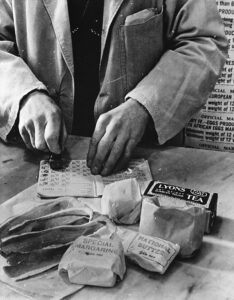
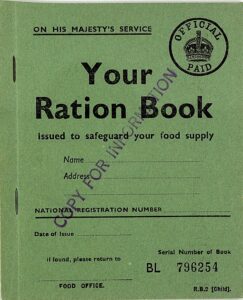 When my dad, Staff Sergeant Allen Spencer, was serving in the Army Air Force during World War II, rationing was not an unusual thing. Nevertheless, most of us think of rationing to be in the form of gas rationing. That is pretty much the kind of rationing we have heard being used these days, but on January 8, 1941, the government of the United Kingdom began a different kind of rationing…food. I can see the value of such a thing, because by limiting the amount of food each person could have, they could ensure that everyone was able to get enough food to sustain them. People weren’t going to gain weight on the amount of food allowed, but they could survive. I suppose the fact that there were so many extra people, in the form of the military forces, just added to the need to ration.
When my dad, Staff Sergeant Allen Spencer, was serving in the Army Air Force during World War II, rationing was not an unusual thing. Nevertheless, most of us think of rationing to be in the form of gas rationing. That is pretty much the kind of rationing we have heard being used these days, but on January 8, 1941, the government of the United Kingdom began a different kind of rationing…food. I can see the value of such a thing, because by limiting the amount of food each person could have, they could ensure that everyone was able to get enough food to sustain them. People weren’t going to gain weight on the amount of food allowed, but they could survive. I suppose the fact that there were so many extra people, in the form of the military forces, just added to the need to ration.
Of course, some food rationing occurred before this date too. Rationing was introduced temporarily by the government of the United Kingdom several times during the 20th century, during and immediately after a war. At the start of World War II in 1939, the United Kingdom was importing 20 million long tons of food per year, including about 70% of its cheese and sugar, almost 80% of its fruit and about 70% of its cereals and fats. It also imported more than half of its meat and relied on imported feed to support its domestic meat production. The civilian population of the country alone, was about 50 million. It was one of the principal strategies of the Germans in the Battle of the Atlantic to attack shipping bound for Britain, restricting British industry and  potentially starving nations into submission. Siege tactics were not unusual and have been used throughout history by several countries.
potentially starving nations into submission. Siege tactics were not unusual and have been used throughout history by several countries.
So, to deal with the various forms of shortages, and sometimes extreme shortages, the Ministry of Food instituted a system of rationing. Basically, the Ministry of Food would buy most rationed items, forcing anyone who wanted some of these items to register at chosen shops. Upon registration, they were provided with a ration book containing coupons. The shopkeeper was provided with enough food for registered customers. Purchasers had to present ration books when shopping so that the coupon or coupons could be cancelled as these pertained to rationed items. Rationed items had to be purchased and paid for as usual, although their price was strictly controlled by the government and many essential foodstuffs were subsidized. Basically, rationing restricted what items and what amount could be purchased, as well as what they would cost. To make matters worse the items that were not rationed could be scarce, because the Ministry of Food did not purchase said items. The priced for some of the unrationed items were also controlled by the Ministry of Food, and for many people those prices were too high for them to be able to afford, causing people to try to cheat the system, and merchants to try to either assist the people or to gouge the public in order to make a buck. This brought penalties for 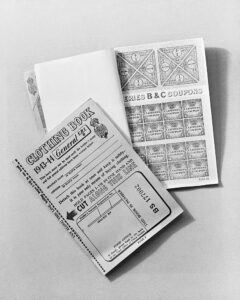
 breaking the laws of rationing.
breaking the laws of rationing.
During the World War II, rationing was not restricted to food, and was part of a strategy including controlled prices, subsidies, and government-enforced standards. The goal for this controlled pricing and rationing was to manage scarcity and prioritize the armed forces and essential services with the supplies they needed first. They did still try to make available to everyone, an adequate and affordable supply of goods of acceptable quality. I suppose that how well they accomplished their goal, would be a matter of opinion. Of course, like all wars, World War II ended, as did the rationing of the time, but rationing has returned a number of times, and will again, should the need arise.
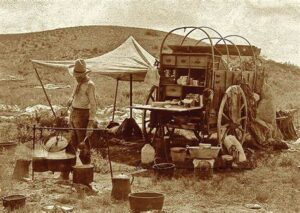 After watching numerous old western shows about cattle drives, most of us would automatically assume that a chuckwagon is a staple on any cattle drive. That is not the case, however. In the early years of cattle drives, the cowboys were supposed to supply their own food, and had to survive on what they could forage and carry. With that in mind, hiring cowboys for the drive was tough. Cowboys were usually paid about $25 to $40 a month, so to have to buy food out of that too, doesn’t make cattle driving a “get rich quick” kind of job. Basically, cattle ranchers ended up with people who couldn’t get a job anywhere else, and they usually weren’t loyal or very good at their job. They might even walk off the job before the drive was over.
After watching numerous old western shows about cattle drives, most of us would automatically assume that a chuckwagon is a staple on any cattle drive. That is not the case, however. In the early years of cattle drives, the cowboys were supposed to supply their own food, and had to survive on what they could forage and carry. With that in mind, hiring cowboys for the drive was tough. Cowboys were usually paid about $25 to $40 a month, so to have to buy food out of that too, doesn’t make cattle driving a “get rich quick” kind of job. Basically, cattle ranchers ended up with people who couldn’t get a job anywhere else, and they usually weren’t loyal or very good at their job. They might even walk off the job before the drive was over.
It was a big problem for ranchers, who needed to have reliable, as well as capable cowboys to work the drives. Finally, one rancher, a man named Charles Goodnight, while pondering the problem he had in getting good working cowboys for his cattle drive. Then, he hit upon an idea. Goodnight created a type of field kitchen covered wagon. It is unknown if the name comes from the fact that the inventor is Charles (Chuck) or if it referenced chuck as a slang term for food. “Goodnight modified a Studebaker-manufactured covered wagon, a d urable Civil War army-surplus wagon, to suit the needs of cowboys driving cattle from Texas to sell in New Mexico. He added a ‘chuck box’ to the back of the wagon, with drawers and shelves for storage space and a hinged lid to provide a flat working surface. A water barrel was also attached to the wagon and canvas was hung underneath to carry firewood. A wagon box was used to store cooking supplies and cowboys’ personal items.” It is said that Goodnight’s main motivation for the chuckwagon, was to be able to hire a better class of cowboy and keep them throughout the cattle drive.
urable Civil War army-surplus wagon, to suit the needs of cowboys driving cattle from Texas to sell in New Mexico. He added a ‘chuck box’ to the back of the wagon, with drawers and shelves for storage space and a hinged lid to provide a flat working surface. A water barrel was also attached to the wagon and canvas was hung underneath to carry firewood. A wagon box was used to store cooking supplies and cowboys’ personal items.” It is said that Goodnight’s main motivation for the chuckwagon, was to be able to hire a better class of cowboy and keep them throughout the cattle drive.
“Chuckwagon food typically included easy-to-preserve items such as baked beans, salted meats, coffee, and sourdough biscuits. Food would also be gathered en route. There was no fresh fruit, vegetables, or eggs available, and meat was not fresh unless an animal was injured during the run and therefore had to be killed. The meat they ate was greasy cloth-wrapped bacon, salt pork, and beef, usually dried, salted or smoked. On cattle drives, it was common for the “cookie” who ran the wagon to be second in authority only to the “trailboss.” The cookie would often act as cook, barber, dentist, and banker.” A typical trail boss made $100 to $125 a month, and the cook usually made about $60. 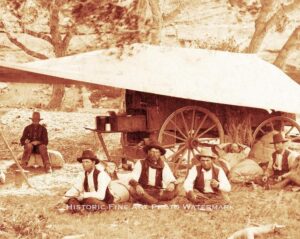 The cook was vital to the cattle drive and was not to be crossed. The men were to keep their distance from the chuckwagon, because dust would get in the food. The horses left camp downwind of the chuckwagon for the same reason. No one dared take the last serving of food until they were sure that everyone had been served. To leave food on their plates was an insult to the cook. The cooks had long days…up before dawn to prepare food. After the men left for work, they cleaned up camp and washed dishes, then went to the next camp site to begin dinner for the men’s arrival. After dinner they cleaned up and went to bed. The next day would soon arrive. They more than earned their wage and the special wagon they got to use.
The cook was vital to the cattle drive and was not to be crossed. The men were to keep their distance from the chuckwagon, because dust would get in the food. The horses left camp downwind of the chuckwagon for the same reason. No one dared take the last serving of food until they were sure that everyone had been served. To leave food on their plates was an insult to the cook. The cooks had long days…up before dawn to prepare food. After the men left for work, they cleaned up camp and washed dishes, then went to the next camp site to begin dinner for the men’s arrival. After dinner they cleaned up and went to bed. The next day would soon arrive. They more than earned their wage and the special wagon they got to use.
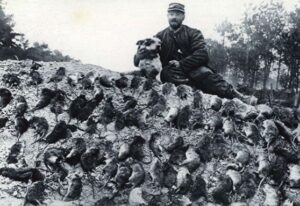
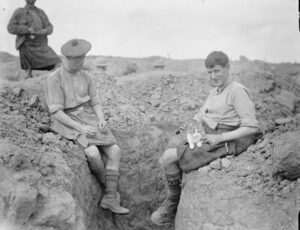 Trench warfare is a type of land warfare using occupied lines largely comprising military trenches, in which troops are well-protected from the enemy’s small arms fire and are substantially sheltered from artillery. That doesn’t protect them from many other weapons, like tanks, bomber planes, and some things that seem far more benign…rats and disease, not that these things aren’t dangerous. In fact, during World War I, these seemingly benign pests were becoming a deadly problem. Trench foot was one of the biggest disease problems, due to the wet and dirty conditions the men basically lived in.
Trench warfare is a type of land warfare using occupied lines largely comprising military trenches, in which troops are well-protected from the enemy’s small arms fire and are substantially sheltered from artillery. That doesn’t protect them from many other weapons, like tanks, bomber planes, and some things that seem far more benign…rats and disease, not that these things aren’t dangerous. In fact, during World War I, these seemingly benign pests were becoming a deadly problem. Trench foot was one of the biggest disease problems, due to the wet and dirty conditions the men basically lived in.
The rats…well, they were a bigger problem. The fact that the men “lived” in the trenches meant things like human waste, food scraps, and dead bodies drew the rats, and rats spread disease like typhus and the plague, 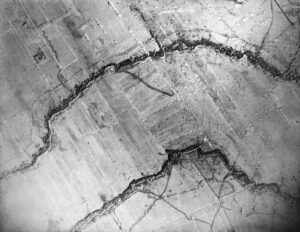 which made the problem of disease more deadly. Since trash disposal wasn’t easy in the trenches, the men often threw empty food tins out of the trenches at night. Then, the rats could be heard turning the tins over and licking the last tidbits out of them. For me the whole scene would be enough to make me want to run screaming from the scene, but that could get a soldier killed. Something had to be done…and done quickly. Due to the plentiful amount of food, some of these rats grew quite large in size. One story tells of a soldier who spotted one the size of a cat.
which made the problem of disease more deadly. Since trash disposal wasn’t easy in the trenches, the men often threw empty food tins out of the trenches at night. Then, the rats could be heard turning the tins over and licking the last tidbits out of them. For me the whole scene would be enough to make me want to run screaming from the scene, but that could get a soldier killed. Something had to be done…and done quickly. Due to the plentiful amount of food, some of these rats grew quite large in size. One story tells of a soldier who spotted one the size of a cat.
Something had to be done, so French troops tried to control the rat problem by bringing terrier dogs into the trenches with them. The plan was to let the dogs catch and kill rats, and it quickly became an interesting way to pass the time during daylight hours. Because of the dangers presented by the rats, the military actually offered soldiers a reward for killing the rats as incentive to decrease their numbers. It was a great idea, but not really practical, because rats are notoriously great escape artists…at least from humans. Nevertheless, apparently the troops got so into the 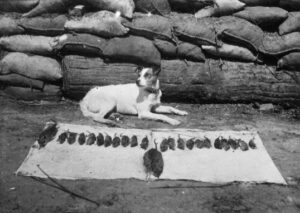
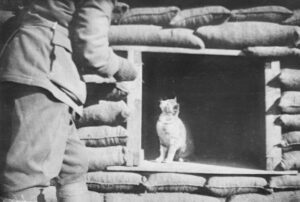 game, with one army corps managed to catch 8,000 in a single night. Other soldiers adopted cats instead of dogs, and it’s believed around 500,000 cats helped out in the trenches over the course of World War I. Many of the cats, and some of the dogs, ended up serving as mascots for troops on the front lines as well as hunters. I guess the plan worked, but maybe the animals should have been given a medal too.
game, with one army corps managed to catch 8,000 in a single night. Other soldiers adopted cats instead of dogs, and it’s believed around 500,000 cats helped out in the trenches over the course of World War I. Many of the cats, and some of the dogs, ended up serving as mascots for troops on the front lines as well as hunters. I guess the plan worked, but maybe the animals should have been given a medal too.

 My great grandnephew, Aysa Balcerzak is turning one today. I can hardly believe he is a year old already. This sweet smiley little boy is always happy, although his parents might disagree with me, but I only see his best faces, so I’ll go with what I see. Aysa loves spending time with his big sister, Reece, who is just as smiley as her brother, and loves that she has a little brother. Reece loves “showing her brother the ropes” about things, and Aysa is really having a good time exploring the world around him. He really is learning the ropes, like what all these leaves on the ground are all about and that food is fun to eat…and to play with. Of course, he is also exploring the multiple toys he now has, and as we all know, that collection will quickly grow. It is just the way it goes with kids.
My great grandnephew, Aysa Balcerzak is turning one today. I can hardly believe he is a year old already. This sweet smiley little boy is always happy, although his parents might disagree with me, but I only see his best faces, so I’ll go with what I see. Aysa loves spending time with his big sister, Reece, who is just as smiley as her brother, and loves that she has a little brother. Reece loves “showing her brother the ropes” about things, and Aysa is really having a good time exploring the world around him. He really is learning the ropes, like what all these leaves on the ground are all about and that food is fun to eat…and to play with. Of course, he is also exploring the multiple toys he now has, and as we all know, that collection will quickly grow. It is just the way it goes with kids.
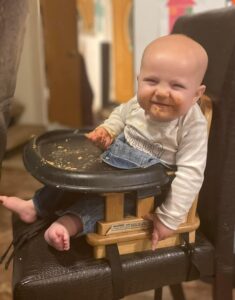

Aysa is learning the art of coaching his big sister’s sporting events…with a little help from his daddy, Keifer Balcerzak. He loves to be right there on the field, so he can see all the action firsthand.
I suppose there will come a time when Aysa will be more into sports that Reece will, so it makes sense that he should watch closely. I know that because his daddy and grandpa, Dave Balcerzak both love sports, and quite likely his other grandparents do too, so Aysa comes from a long line of sports people. I know he will grow right into it.
While he loves watching sports, Aysa is also a cuddly boy. He loves snuggling up with his family, and they 
 should really enjoy that while the can, because as we all know, most little boys grow out of the cuddly phase pretty quickly. I mean, a school aged boy can’t be seen hugging on his mom and such. Still, some boys don’t care, and maybe Aysa will be one of those. It’s always fun to have a boy who just loves giving hugs, because so many don’t. Whether Aysa continues to be a cuddly child or not, remains to be seen, but nevertheless, Aysa is a sweet little boy, who has captured the hearts of all who know him. His smiley face, and cheerful personality, make him a child who is so much fun to be around. Aysa is just perfect in every way. Today is Aysa’s first birthday. Happy 1st birthday Aysa!! Have a wonderful day, sweet boy!! We love you!!
should really enjoy that while the can, because as we all know, most little boys grow out of the cuddly phase pretty quickly. I mean, a school aged boy can’t be seen hugging on his mom and such. Still, some boys don’t care, and maybe Aysa will be one of those. It’s always fun to have a boy who just loves giving hugs, because so many don’t. Whether Aysa continues to be a cuddly child or not, remains to be seen, but nevertheless, Aysa is a sweet little boy, who has captured the hearts of all who know him. His smiley face, and cheerful personality, make him a child who is so much fun to be around. Aysa is just perfect in every way. Today is Aysa’s first birthday. Happy 1st birthday Aysa!! Have a wonderful day, sweet boy!! We love you!!
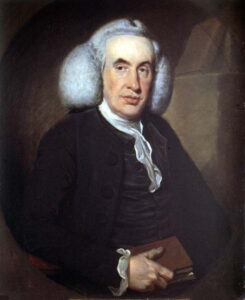 Most people, these days, don’t necessarily know who William Cullen is, but historically speaking, he is a very important man. Born April 15, 1710, in Hamilton, Lanarkshire, the son of William Cullen…a lawyer and Elizabeth Roberton of Whistlebury. Cullen was a Scottish physician, chemist and agriculturalist, as well as a professor at the Edinburgh Medical School, but these things would not be the defining accomplishment of his life. Cullen saw a need for something, that many people knew they needed, but no one knew how to get it.
Most people, these days, don’t necessarily know who William Cullen is, but historically speaking, he is a very important man. Born April 15, 1710, in Hamilton, Lanarkshire, the son of William Cullen…a lawyer and Elizabeth Roberton of Whistlebury. Cullen was a Scottish physician, chemist and agriculturalist, as well as a professor at the Edinburgh Medical School, but these things would not be the defining accomplishment of his life. Cullen saw a need for something, that many people knew they needed, but no one knew how to get it.
Years ago, towns had an icehouse. Snow and ice were stored in a cellar in an effort to keep them frozen for use by the townspeople. Then the icehouse owner would bring ice to people, and it would basically be kept in a “cooler” so food could be kept cold for a while. It was an imperfect system, but it was all they had. Cullen could see that something better was needed. I’m sure he saw the diseases that came from spoiled food and maybe even deaths from that food. That got him thinking.
After Cullen completed his education at the University of Glasgow and the University of Edinburgh, he started his formal career. His field of study and subsequent career in medicine and after completing the studies, he started in that career, but he was also interested in working on a scientific basis to invent different things. That was when Cullen envisioned and then invented an artificial refrigerator which was used manually to save many things from getting wasted.
These days, the refrigerator is an appliance which can be found in almost every house, and it is one of the most used appliances. It comes in different shapes and in different sizes. Normally, it is made up in “the form of two compartments and one of them is insulated thermally, while the other compartment consists of a heat pump and its important function is the transfer of heat. This transfer is done to manage heat environment.” I don’t presume to understand how all that works. I just know that my food stays the temperature it needs to be to either freeze it of just keep it cold.
In 1741 he married Anne (or Anna) Johnstone, who died 1786. He was father to Robert Cullen and Henry Cullen, who became a physician. Cullen’s eldest son Robert became a Scottish judge in 1796 under the title of Lord Cullen, and later Baron Cullen, and was known for his powers of mimicry. Cullen died in Edinburgh, Scotland on February 5, 1790. He was almost 80 years of age at the time of his death.
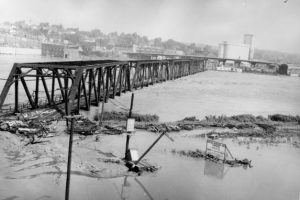 Rain…it waters the earth, and as we all know, without it, we could not survive. Nevertheless, as vital as water is to life on this planet, too much of it can be deadly. People can drink too much water, we can over-water our plants, and too much rain can bring flooding. Such was the case on July 13, 1951. Above-average rainfall began in June and continued through July 13th, dumping well over 25 inches on some areas in eastern Kansas. From July 9th to 13th, nearly 6 inches of rain fell. The Kansas, Neosho, and Verdigris rivers began taking on more water than their normal carrying capacity a couple of days into the storm, but as the rain persisted, flooding began all over the region.
Rain…it waters the earth, and as we all know, without it, we could not survive. Nevertheless, as vital as water is to life on this planet, too much of it can be deadly. People can drink too much water, we can over-water our plants, and too much rain can bring flooding. Such was the case on July 13, 1951. Above-average rainfall began in June and continued through July 13th, dumping well over 25 inches on some areas in eastern Kansas. From July 9th to 13th, nearly 6 inches of rain fell. The Kansas, Neosho, and Verdigris rivers began taking on more water than their normal carrying capacity a couple of days into the storm, but as the rain persisted, flooding began all over the region.
The major towns of Manhattan, Topeka and Lawrence took the biggest hit. As is  the case in any area where absorption is hampered by cement and asphalt, the rain could not soak in, and the ground was are already saturated anyway. The rain had nowhere to go, and the area was in trouble. Prior to the July 13 river crest, previous highs were dwarfed by four to nine feet. Two million acres of farmland were lost to the flood, which would trigger a crisis of its own, by a shortage of food. The flooding also caused fires and explosions in refinery oil tanks on the banks of the Kansas River. Passenger trains traveling through the area were stuck for nearly four days. In all, $760 million in damages were caused by the flood, and 500,000 people were left homeless, while 24 people died in the disaster. It was the greatest destruction from flooding in the Midwestern United States up to that time.
the case in any area where absorption is hampered by cement and asphalt, the rain could not soak in, and the ground was are already saturated anyway. The rain had nowhere to go, and the area was in trouble. Prior to the July 13 river crest, previous highs were dwarfed by four to nine feet. Two million acres of farmland were lost to the flood, which would trigger a crisis of its own, by a shortage of food. The flooding also caused fires and explosions in refinery oil tanks on the banks of the Kansas River. Passenger trains traveling through the area were stuck for nearly four days. In all, $760 million in damages were caused by the flood, and 500,000 people were left homeless, while 24 people died in the disaster. It was the greatest destruction from flooding in the Midwestern United States up to that time.
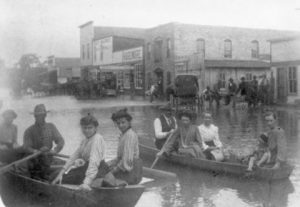
A often happen, tragedy brings change. Following the great 1951 flood, a series of reservoirs and levees were constructed all over the area. In 1993, these were credited with minimizing the damage from another record flood. Water is an element that is necessary for life, but lest we forget, water in an overabundance can kill and destroy. People need to pay attention to evacuation warnings, and get out of an area where a flood is eminent. You may lose some things, but if you leave the area, you will most likely to walk away unscathed, and as we know, things can be predicted, and those who head out of unsafe areas will most likely live to tell the tale.
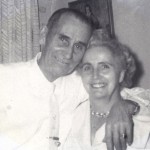 My grandfather, George Byer was a man of gentle strength. Many people may not think those to traits go together, but in him they did. He was always a hard-working man, who gave his all to support his family, but maybe the gentleness came partly from the fact that he had 9 children, 7 of whom were girls. That can make a man understand that girls are often the fairer gender, at least in those days. Grandpa Byer lived in a time when the women stayed home and raised the family and the men went out and made the living…even if that meant working long hours or multiple jobs. Grandpa also lived during the great depression, when jobs were scarce, so the women need not have bothered to go look for one very often.
My grandfather, George Byer was a man of gentle strength. Many people may not think those to traits go together, but in him they did. He was always a hard-working man, who gave his all to support his family, but maybe the gentleness came partly from the fact that he had 9 children, 7 of whom were girls. That can make a man understand that girls are often the fairer gender, at least in those days. Grandpa Byer lived in a time when the women stayed home and raised the family and the men went out and made the living…even if that meant working long hours or multiple jobs. Grandpa also lived during the great depression, when jobs were scarce, so the women need not have bothered to go look for one very often.
While times were tough sometimes, the family really never wanted for much, and grandma, Hattie Byer could somehow make the meager portions of food go a long way, and still never turn 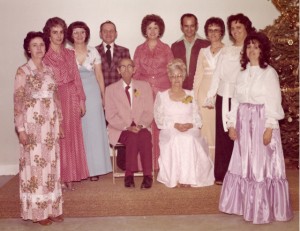 away a stranger in need of a meal, and it seemed there was always a plentiful supply of those strangers and friends who would come for dinner at the Byer house. They were a good team, and truth be told, Grandma Byer was probably just as tough, if not more so than Grandpa Byer, who did have a definite soft spot in his heart for people. Grandpa worked at a number of jobs, but the one I probably heard the most about was the building of Alcova Dam Grandpa had also worked on Kortez Dam and Pathfinder Dam, but my mom, Collene Spencer, who was Grandpa’s middle child, always mentioned to us that her dad had helped build Alcova Dam, every time we drove past it. She was very proud of her dad, and with good reason, because he was very special.
away a stranger in need of a meal, and it seemed there was always a plentiful supply of those strangers and friends who would come for dinner at the Byer house. They were a good team, and truth be told, Grandma Byer was probably just as tough, if not more so than Grandpa Byer, who did have a definite soft spot in his heart for people. Grandpa worked at a number of jobs, but the one I probably heard the most about was the building of Alcova Dam Grandpa had also worked on Kortez Dam and Pathfinder Dam, but my mom, Collene Spencer, who was Grandpa’s middle child, always mentioned to us that her dad had helped build Alcova Dam, every time we drove past it. She was very proud of her dad, and with good reason, because he was very special.
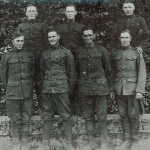 Grandpa served in the Army during World War I as a cook. While he was very brave, and never a man to shirk his duties, I think it would have been hard for this gentle soul to have a military career of killing people. Nevertheless, had the need arisen, he would have done it, because he always knew that he would protect those in his charge. He was a very loyal soldier, and he would never have allowed those he cared about to be killed, if he could stop it. His gentle strength was, for me, his trademark trait. I remember it from my childhood as clearly as if Grandpa Byer were standing right next to me as I write this story. he was the sweetest, kindest, most gentle man anyone could have known. Today would have been my Grandpa Byer’s 126th birthday. Happy birthday in Heaven, Grandpa. We love and miss you very much!!
Grandpa served in the Army during World War I as a cook. While he was very brave, and never a man to shirk his duties, I think it would have been hard for this gentle soul to have a military career of killing people. Nevertheless, had the need arisen, he would have done it, because he always knew that he would protect those in his charge. He was a very loyal soldier, and he would never have allowed those he cared about to be killed, if he could stop it. His gentle strength was, for me, his trademark trait. I remember it from my childhood as clearly as if Grandpa Byer were standing right next to me as I write this story. he was the sweetest, kindest, most gentle man anyone could have known. Today would have been my Grandpa Byer’s 126th birthday. Happy birthday in Heaven, Grandpa. We love and miss you very much!!
 My uncle, Wayne Byer was for many years the head of the bus garage of the Natrona County School District. It was a job he liked, and he was very well known and liked by everyone within the district. We, his nieces and nephews, were also very proud of the fact that our uncle was in charge of the bus garage…whether we rode a bus or not. I think most of us felt like he ran the school, which of course, he didn’t, but we were kids…what did we know?
My uncle, Wayne Byer was for many years the head of the bus garage of the Natrona County School District. It was a job he liked, and he was very well known and liked by everyone within the district. We, his nieces and nephews, were also very proud of the fact that our uncle was in charge of the bus garage…whether we rode a bus or not. I think most of us felt like he ran the school, which of course, he didn’t, but we were kids…what did we know?
While he wasn’t in charge of the school, some of us still found that it pays to know people in high places, or not so high places. As long as they  were liked, it paid to know them. Knowing Uncle Wayne was not something that I ever recall bringing me any special treatment, but my sisters, Caryl Reed, Alena Stevens, and Allyn Hadlock had a different take on that story. While attending East Junior High School, the subject of Uncle Wayne, and our relationship to him, somehow came up. That was advantageous for my sisters, in that the ladies who worked in the cafeteria, knew and very much liked Uncle Wayne. That said, they also took a liking to my sisters, and therefore, saved them some of the best food…freshest, best cuts, biggest pieces, best desserts, and such, were among the perks. I’m sure that Uncle Wayne never knew this was happening, not that it would have bothered him. I can see him grinning over such an event right now.
were liked, it paid to know them. Knowing Uncle Wayne was not something that I ever recall bringing me any special treatment, but my sisters, Caryl Reed, Alena Stevens, and Allyn Hadlock had a different take on that story. While attending East Junior High School, the subject of Uncle Wayne, and our relationship to him, somehow came up. That was advantageous for my sisters, in that the ladies who worked in the cafeteria, knew and very much liked Uncle Wayne. That said, they also took a liking to my sisters, and therefore, saved them some of the best food…freshest, best cuts, biggest pieces, best desserts, and such, were among the perks. I’m sure that Uncle Wayne never knew this was happening, not that it would have bothered him. I can see him grinning over such an event right now.
 Of course, it was a great compliment to Uncle Wayne, and well earned. He was always an easy going, fun loving, slightly mischievous man, and that endeared him to a lot of people. He didn’t have to do much…just smile at them with that infectious smile of his, and people immediately loved him. And anyone who could honestly say they were related to him should have special treatment too. I guess it was just not something I ever thought of telling everyone, although I can see now that I should have. I can totally see how the ladies in the cafeteria could grow to like Uncle Wayne, because he was a very likeable man, and every one of his nieces and nephews would tell you the same. Today is Uncle Wayne’s 81st birthday. Happy birthday Uncle Wayne. Have a great day!! We love you!!
Of course, it was a great compliment to Uncle Wayne, and well earned. He was always an easy going, fun loving, slightly mischievous man, and that endeared him to a lot of people. He didn’t have to do much…just smile at them with that infectious smile of his, and people immediately loved him. And anyone who could honestly say they were related to him should have special treatment too. I guess it was just not something I ever thought of telling everyone, although I can see now that I should have. I can totally see how the ladies in the cafeteria could grow to like Uncle Wayne, because he was a very likeable man, and every one of his nieces and nephews would tell you the same. Today is Uncle Wayne’s 81st birthday. Happy birthday Uncle Wayne. Have a great day!! We love you!!


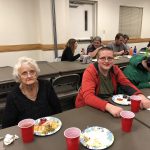 For most people the holidays are all about tradition. Of course, for all Christians, Christmas is about Jesus, but it’s also about family time, family traditions, parties, and gifts…with the greatest gift being Jesus. But, one tradition concerning those parties, for me and my family anyway, is the traditional Byer Family Christmas party. My mom, Collene Byer Spencer’s parents George and Hattie Byer started the tradition years and years ago, when their house really got too small to handle their large and ever growing family. The party was moved to the Mills Fire Hall, and on the day of the party, we literally filled it up!! Grandma and Grandpa Byer were surrounded by their loving children, grandchildren, and great grandchildren…and they were so happy. With a family as large as ours, well over 300 now, of course, you might not get to talk with each and every one, but you saw them, and they saw you, and it kept the family close. Grandma and Grandpa wanted that tradition to continue, even after their passing, and so they charged their children with the task of keeping the tradition alive, and the family close. And they did a good job of it.
For most people the holidays are all about tradition. Of course, for all Christians, Christmas is about Jesus, but it’s also about family time, family traditions, parties, and gifts…with the greatest gift being Jesus. But, one tradition concerning those parties, for me and my family anyway, is the traditional Byer Family Christmas party. My mom, Collene Byer Spencer’s parents George and Hattie Byer started the tradition years and years ago, when their house really got too small to handle their large and ever growing family. The party was moved to the Mills Fire Hall, and on the day of the party, we literally filled it up!! Grandma and Grandpa Byer were surrounded by their loving children, grandchildren, and great grandchildren…and they were so happy. With a family as large as ours, well over 300 now, of course, you might not get to talk with each and every one, but you saw them, and they saw you, and it kept the family close. Grandma and Grandpa wanted that tradition to continue, even after their passing, and so they charged their children with the task of keeping the tradition alive, and the family close. And they did a good job of it.
Now, there are several of those kids who have, themselves, gone on to Heaven, and sadly, our numbers are 

 dwindling, because we…the grandchildren have failed to take the reigns, and keep Grandma and Grandpa Byer’s dream alive. It is so easy to look at the aunts and assume that this is their duty, and not ours, but is it…really? Aren’t we, the grandchildren old enough now to also take up the simple task and honor our grandparents, and our aunts and uncles, in such a way. There are, of course, a number of the grandchildren who still come to the party every year, and we find ourselves very blessed by the evening. It is fun, and if we take a few minutes to walk around the room and visit with our aunts, uncles and cousins, we will find that we have a pretty wonderful family, and that the traditional Byer Family Christmas Party is a blessing that continues to grow…needing really just the watering of more loved ones to join in. It saddens me to think that the day might come, when it no longer makes sense to rent the facilities, because so few have shown up in past years, but it could come to that I suppose. We all think there is a lot of time to visit with our aunts, uncles, and cousins, but every time one of them goes to Heaven, we find out that there was so little time, and we wasted it, by thinking that our presence didn’t really matter. They could do without us. And yes, the party did go on, and we all had a great time, but the family members who were not there…who could have been, because they
dwindling, because we…the grandchildren have failed to take the reigns, and keep Grandma and Grandpa Byer’s dream alive. It is so easy to look at the aunts and assume that this is their duty, and not ours, but is it…really? Aren’t we, the grandchildren old enough now to also take up the simple task and honor our grandparents, and our aunts and uncles, in such a way. There are, of course, a number of the grandchildren who still come to the party every year, and we find ourselves very blessed by the evening. It is fun, and if we take a few minutes to walk around the room and visit with our aunts, uncles and cousins, we will find that we have a pretty wonderful family, and that the traditional Byer Family Christmas Party is a blessing that continues to grow…needing really just the watering of more loved ones to join in. It saddens me to think that the day might come, when it no longer makes sense to rent the facilities, because so few have shown up in past years, but it could come to that I suppose. We all think there is a lot of time to visit with our aunts, uncles, and cousins, but every time one of them goes to Heaven, we find out that there was so little time, and we wasted it, by thinking that our presence didn’t really matter. They could do without us. And yes, the party did go on, and we all had a great time, but the family members who were not there…who could have been, because they 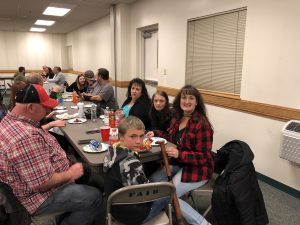

 didn’t have to work, or have anyplace else to be, the ones who simply stayed at home…believe me…yes, you were missed, very much.
didn’t have to work, or have anyplace else to be, the ones who simply stayed at home…believe me…yes, you were missed, very much.
Grandma Byer was a great cook, and she taught her children well, and they taught their children well, and I can tell you that we are a family of great cooks. The food last night was delicious, everyone enjoyed it very much. The children were able to run and play without being in the way, and their parents could relax, because no one was going to think they should make their children sit still. The party is one where everyone’s feeling are treated with care, and oh my…did the children have a great time. No one got hurt, and they got to get their wiggles out, and probably eat far too many sweets, but hey, what is a party for anyway? I loved seeing all the precious little ones, whose eyes danced with glee as they got to spend time with other children that they hadn’t seen in quite a while, and as you know, kids don’t need an introduction. The see another kid their size, and it’s an instant friendship. Oh, that we adults could make friends so easily. All too soon, the party was over, and for many of us, it will be the last time we will see each other until the summer picnic…the other family tradition. 

 We all lead busy lives, and daily visits are hard, but Grandma and Grandpa Byer wanted us to continue the tradition. So to all of you who came, thank you. It was great to see you and I really enjoyed our time together. And to all who couldn’t be there, know that you were missed. Merry Christmas to all of you.
We all lead busy lives, and daily visits are hard, but Grandma and Grandpa Byer wanted us to continue the tradition. So to all of you who came, thank you. It was great to see you and I really enjoyed our time together. And to all who couldn’t be there, know that you were missed. Merry Christmas to all of you.
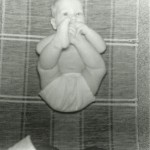
 Babies are so cute. They do things that we as adults can’t do, not only because we would be looked upon as a little off in the head, but because, lets face it…we don’t bend like that anymore. Things like trying to suck on our toes, like my sister, Caryl Reed is doing here, would be looked upon as disgusting, if they were done by adults, and in all reality, most adults would be hard pressed to get their feet to their mouth, although, I’m sure there are those who can do it. If you are one of those, it is probably best to keep it to yourself, because, as I said, people will think you are a little off in the head if you were to do that in public. And yet, we all find the pictures of babies sucking on their toes, to be so cute, that they are definitely Facebook worthy which is one of the highest compliments a picture can get these days. Of course, your baby isn’t really sucking on their toes because they taste good, but rather because they are curious about them, still we would look pretty ridiculous doing the same thing. Kids can get away with goofy stuff, but adults…not so much.
Babies are so cute. They do things that we as adults can’t do, not only because we would be looked upon as a little off in the head, but because, lets face it…we don’t bend like that anymore. Things like trying to suck on our toes, like my sister, Caryl Reed is doing here, would be looked upon as disgusting, if they were done by adults, and in all reality, most adults would be hard pressed to get their feet to their mouth, although, I’m sure there are those who can do it. If you are one of those, it is probably best to keep it to yourself, because, as I said, people will think you are a little off in the head if you were to do that in public. And yet, we all find the pictures of babies sucking on their toes, to be so cute, that they are definitely Facebook worthy which is one of the highest compliments a picture can get these days. Of course, your baby isn’t really sucking on their toes because they taste good, but rather because they are curious about them, still we would look pretty ridiculous doing the same thing. Kids can get away with goofy stuff, but adults…not so much.
Another way that kids have all the freedom over adults is the area of eating and table manners. No one gives a second thought to the mess kids make at the dinner table…until it comes time to clean it up, anyway. When a baby puts a whole bowl of spaghetti on their head, it’s funny. When they like their food so much that they use their hands and shovel it in to the point of wearing almost as much of it on their face as they put in their tummy, it’s funny. When they fall asleep in their food, because lets face it, eating is hard work…it’s funny, and you still have to wonder how they can bend like that. Most adults would have to be drunk to fall asleep comfortably in their plate of food, but kids often do it without a bit of trouble.
And, of course, there are the non-food things that kids do that we as adults probably had better not do. My niece Aleesia Spethman walks in the door of her grandma, my sister, Cheryl Masterson’s house, and before very long, off come most of the clothes. And if there are any pretty shoes around, she is clomping around in those far too big for her shoes, looking like a princess, even thought all she has on is a diaper…or these days, underwear. Of course, Aleesia comes from a family, her 
 grandmother and Aunt Chantel Balcerzak for sure, who are very warm blood people. The removal of the clothes can be a matter of being too hot. Nevertheless, her grandma and her aunt, certainly do not have the luxury of being able to run around in just a diaper, because as with so many other things kids do, that would be ridiculous. Childhood is a special time when these goofy, messy, and absolutely kid things can be done, and no one thinks it odd. It’s a time to find out about all the yummy things life has to offer, and a time to live free of embarrassment, restrictions, limits, and inhibitions.
grandmother and Aunt Chantel Balcerzak for sure, who are very warm blood people. The removal of the clothes can be a matter of being too hot. Nevertheless, her grandma and her aunt, certainly do not have the luxury of being able to run around in just a diaper, because as with so many other things kids do, that would be ridiculous. Childhood is a special time when these goofy, messy, and absolutely kid things can be done, and no one thinks it odd. It’s a time to find out about all the yummy things life has to offer, and a time to live free of embarrassment, restrictions, limits, and inhibitions.

